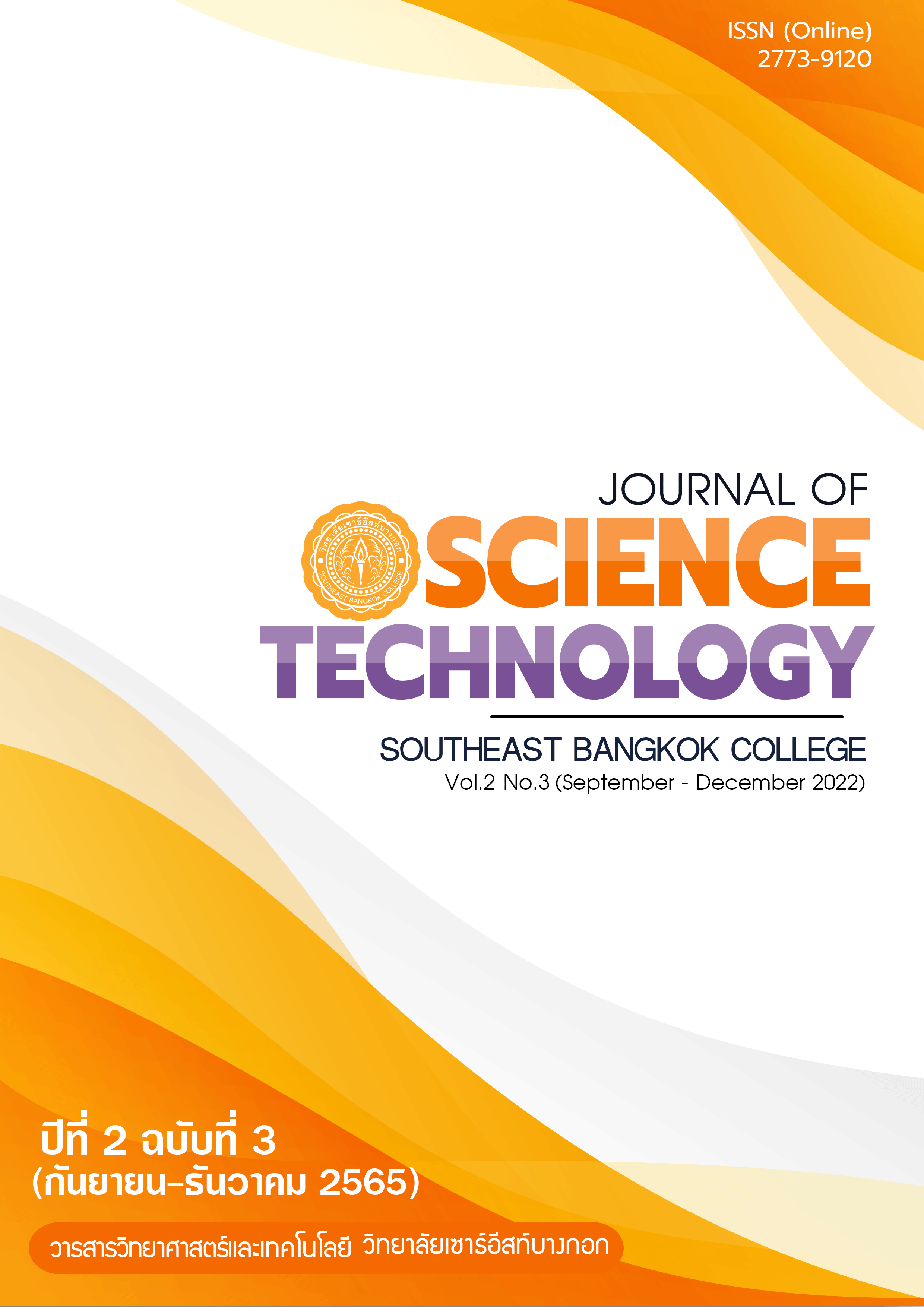การพัฒนาบทเรียนคอมพิวเตอร์ช่วยสอน เรื่องการสร้างเว็บไซต์ ด้วย Adobe Dreamweaver CS6 สำหรับนักเรียนระดับประกาศนียบัตรวิชาชีพ บทความวิจัย
Main Article Content
บทคัดย่อ
การวิจัยครั้งนี้มีวัตถุประสงค์ 1) เพื่อพัฒนาบทเรียนคอมพิวเตอร์ช่วยสอน เรื่องการสร้างเว็บไซต์ด้วย Adobe Dreamweaver CS6 สำหรับนักเรียนระดับประกาศนียบัตรวิชาชีพ 2) เปรียบเทียบผลสัมฤทธิ์ทางการเรียนก่อนเรียนและหลังเรียนด้วยบทเรียนคอมพิวเตอร์ช่วยสอน เรื่องการสร้างเว็บไซต์ด้วย Adobe Dreamweaver CS6 3) เพื่อศึกษาความพึงพอใจของผู้เรียนที่มีต่อบทเรียนคอมพิวเตอร์ช่วยสอน เรื่องการสร้างเว็บไซต์ด้วย Adobe Dreamweaver CS6 กลุ่มตัวอย่างที่ใช้ในการวิจัย คือ นักเรียนระดับประกาศนียบัตรวิชาชีพ (ปวช.) วิทยาลัยเทคนิคสมุทรปราการ ภาคเรียนที่ 1 ปีการศึกษา 2565 จำนวน 30 คน ได้มาจากการสุ่มแบบแบ่งกลุ่ม (Cluster Sampling) เครื่องมือที่ใช้ในการวิจัยประกอบด้วย 1) บทเรียนคอมพิวเตอร์ช่วยสอน 2) แบบสอบถามความพึงพอใจของนักเรียนที่มีต่อบทเรียนคอมพิวเตอร์ช่วยสอน และ 3) แบบทดสอบวัดผลสัมฤทธิ์ทางการเรียนก่อนเรียนและหลังเรียนด้วยบทเรียนคอมพิวเตอร์ช่วยสอน แบบปรนัยชนิดเลือกคำตอบ 4 ตัวเลือกจำนวน 30 ข้อ โดยใช้สถิติ ค่าเฉลี่ย ค่าเบี่ยงเบนมาตรฐาน และการสถิติทดสอบที (t-test) แบบ Related Sample ผลการวิจัยพบว่า 1) ผลสัมฤทธิ์ทางการเรียนหลังเรียนด้วยบทเรียนคอมพิวเตอร์ช่วยสอนสูงกว่าก่อนเรียนอย่างมีนัยสำคัญทางสถิติที่ระดับ .05 2) ความพึงพอใจของผู้เรียนที่มีต่อบทเรียนคอมพิวเตอร์ช่วยสอน เรื่องการสร้างเว็บไซต์ด้วย Adobe Dreamweaver CS6 อยู่ระดับมาก มีค่าเฉลี่ยเท่ากับ 4.43
Article Details

อนุญาตภายใต้เงื่อนไข Creative Commons Attribution-NonCommercial-NoDerivatives 4.0 International License.
บทความที่ได้รับการตีพิมพ์และเป็นลิขสิทธิ์ของวารสารวิทยาศาสตร์และเทคโนโลยี มหาวิทยาลัยเซาธ์อีสท์บางกอก
เอกสารอ้างอิง
Seels, B., & Glasgow, Z., “Making instructional design decisions (2nd ed.)”. Upper Saddle River, NJ.: Merrill.,1998.
C. Rueangsuwan, Development of computer assisted instruction, Mahasarakham: Department of Educational Technology and Communication Faculty of Education Mahasarakham University, 2005.
S. Namburi., “Comparison of Learning Achievement and Student Satisfaction. by using e-book activities and ready-made lessons in an environment e-learning via Moodle program,” [Online]. Available:http://www.elearning108.info/sirichai/images/stories/publication/researches/2550/.
[Accessed: July 2, 2022]
K. Pluamklang and J. Pluamklang., Innovative Educational Media Development, Bangkok: Yellow Printing, 2012.
S. Injiw., “The development of computer-assisted instruction. Preparing for a career, academic work and technology 6 for students in grade 1 Mathayomsuksa 6,” Thesis Ms.c (Educational Technology), Faculty of Education, Burapha University,Chonburi Province, Thailand, 2018.
Y. Kumarasit and A. Pimpimoon, “The Development of Computer Assisted Instruction for Information Technology : Subject of Information Technology and Communications for The Grade 8 Students, ” Journal of Humanities and Social Sciences Valaya Alongkorn, Vol. 12 No. 1, January – April, 2017, P.129-136.
K. Muenchamnong, D. Onchawiang and S. Komanee., “The Development of An Internet based computer assisted instruction lesson on Computer Networking for Mattayomsuksa 2 Students of Anuban Koh Chan School, ” Udon thani Rajabhat University Journal of Science and Techmology, Vol. 7 No. 1, 2019, P.85-99.
B. Srisa-at., Preliminary research. Revised edition. (10th edition). Bangkok: Suweeriyasan, Co., Ltd. 2017.
Robert Gagne.,”Gagne’s Instructional Model,” [Online]. Available: https://e-learning.srru.
ac.th/mod/resource/view.php?id=18704. [Accessed: July 10, 2022]
Michael J. Hannafin, Kyle L. Peck, The Design, Development, and Evaluation of Instructional Software. New York : Macmillan, 1988.


